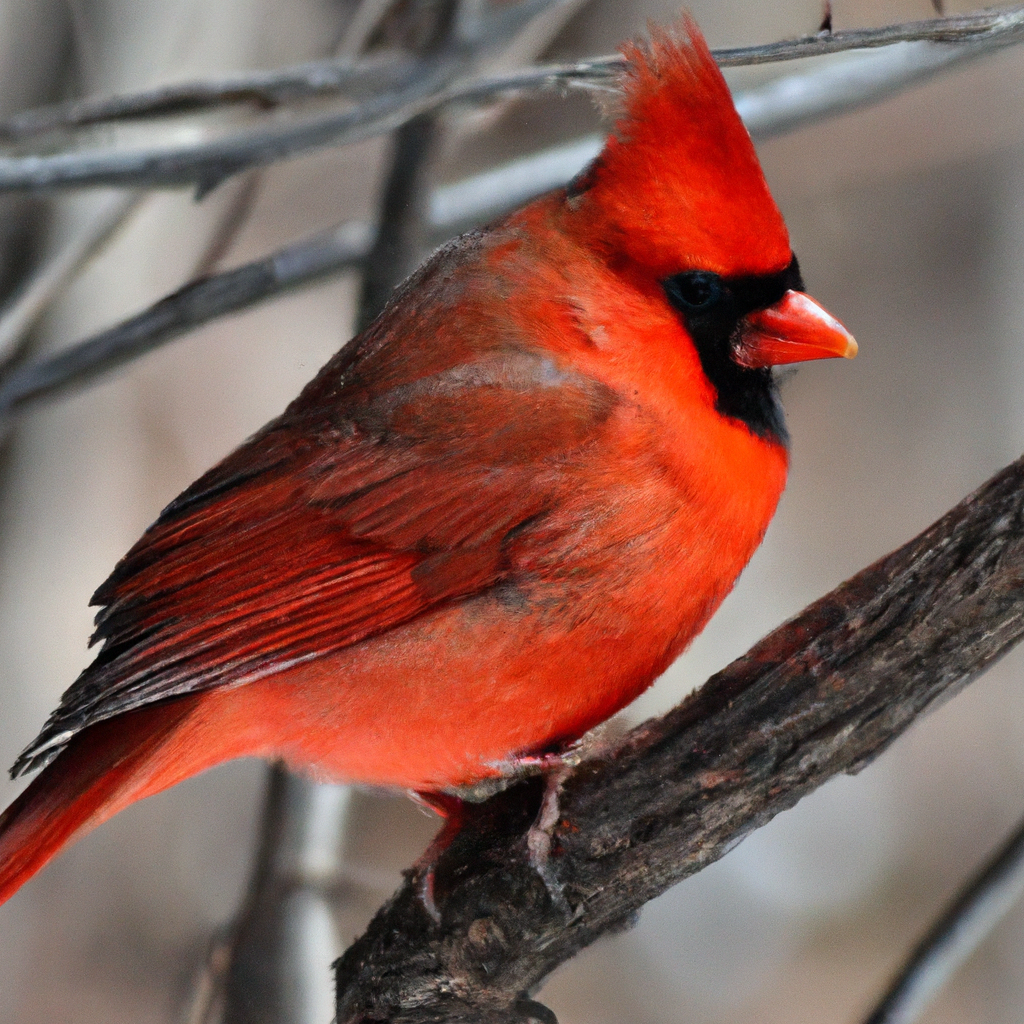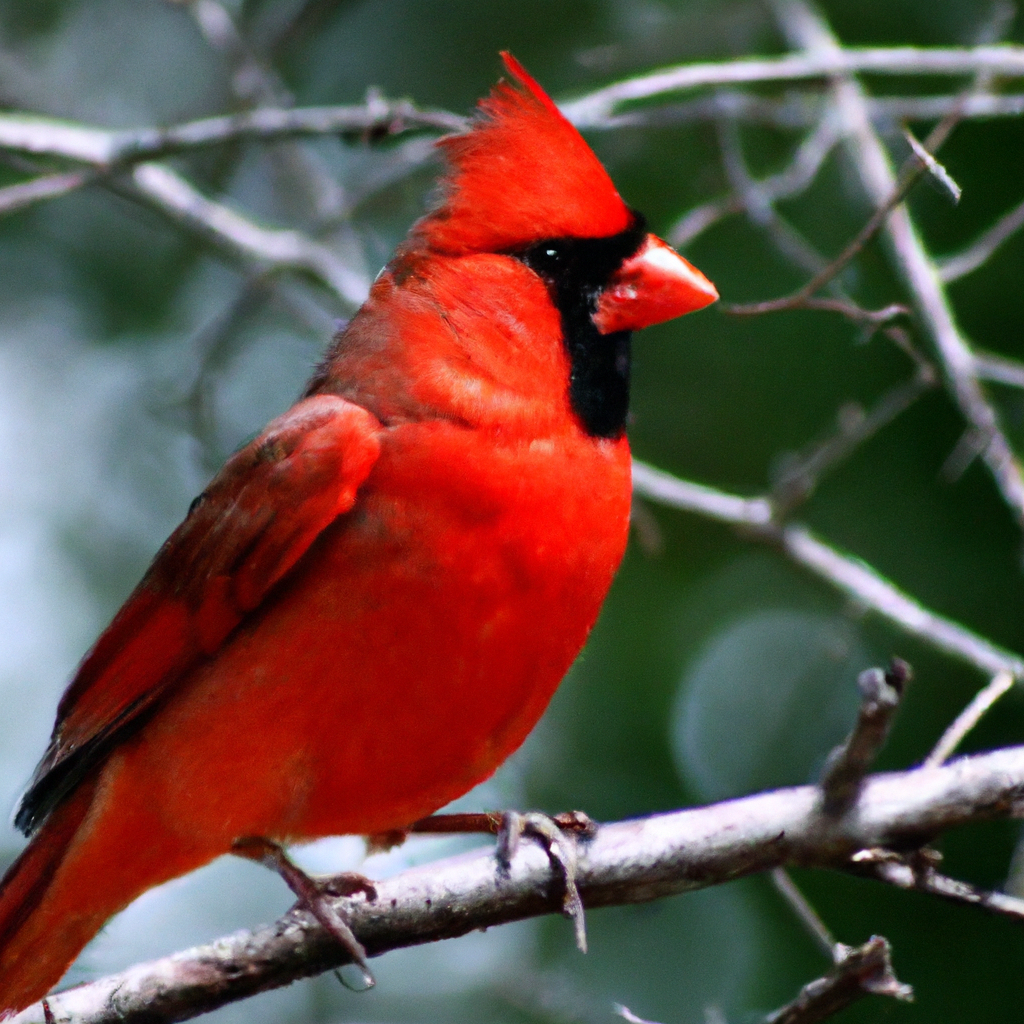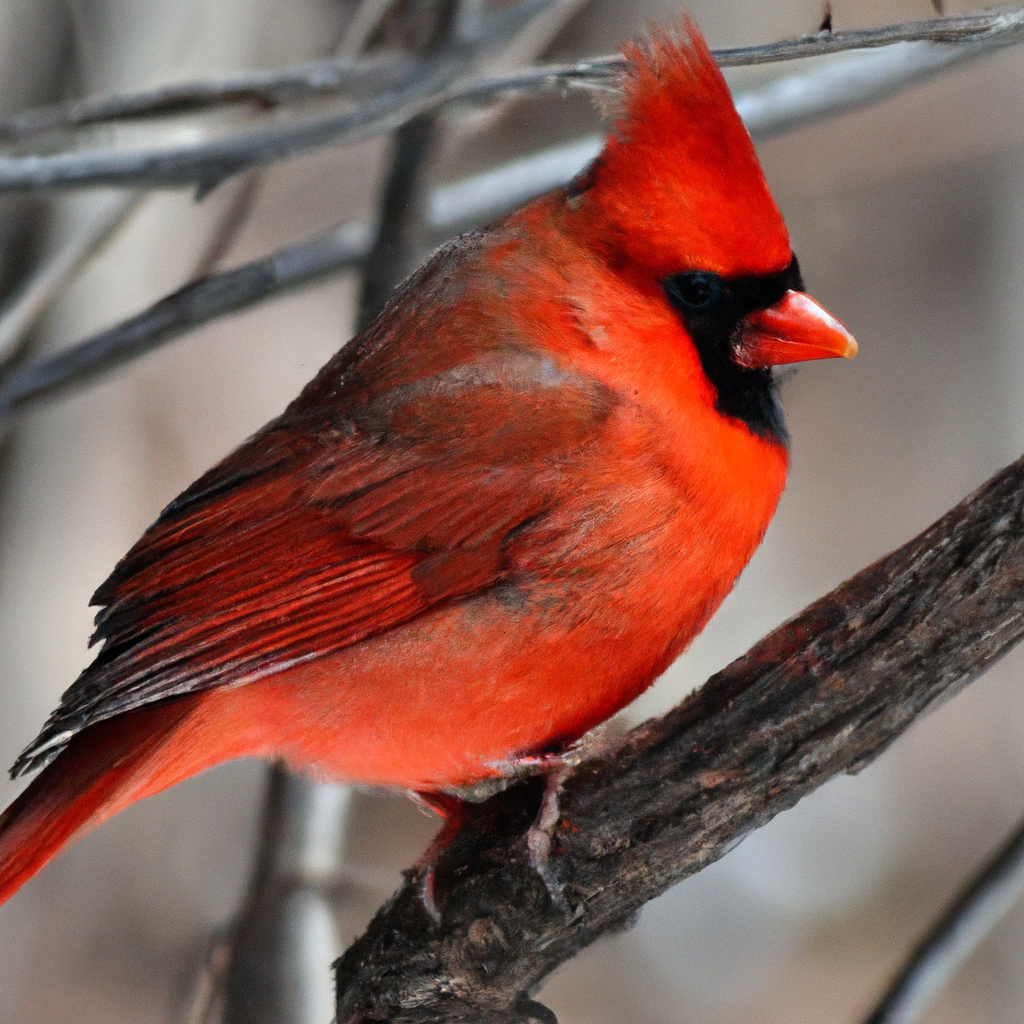Cardinals, those striking birds that grace our gardens and forests, have captivated humanity for centuries with their vibrant crimson plumage. Yet, have you ever stopped to ponder the reason behind their splendid red hue? This article will unlock the secrets of why cardinals are red, unravelling the intricate mechanisms behind their coloration and shedding light on the biological significance of their brilliant shade. Prepare to embark on a fascinating journey into the fascinating world of ornithology as we explore the evolutionary rationale for why cardinals don such a captivating hue.
Evolutionary Adaptations
Evolutionary adaptations refer to the changes that occur in species over time in order to survive and thrive in their environment. Cardinals, like many other birds, have developed various adaptations that have contributed to their success. These adaptations can be categorized into different areas such as camouflage, attracting mates, and species recognition.
Camouflage
Camouflage is an essential survival strategy used by many organisms, including birds. Cardinals, despite their vibrant red plumage, have actually evolved a form of camouflage that enables them to blend into their surroundings. This is because the red coloration of their feathers matches the color of certain forest fruits, such as berries. By blending in, cardinals can effectively avoid being detected by predators while foraging for food.
Attracting Mates
One of the primary purposes of the bright red coloration in male cardinals is to attract mates. In the animal kingdom, it is often the males that possess elaborate and eye-catching traits to compete for the attention of females. Male cardinals’ red feathers play a crucial role in attracting female cardinals during the mating season. The vibrant red color signals good health and genetic fitness, as well as acting as a visual cue for females to identify potential mates.
This image is property of images.unsplash.com.
Species Recognition
Cardinals also utilize their red coloration as a means of species recognition. By having distinctive red feathers, both males and females can easily identify members of their own species. This is particularly important during territorial disputes or mating rituals, as it helps to prevent interbreeding with closely related species. Species recognition can also promote social cohesion within a population, as individuals are more likely to cooperate and communicate with those they recognize as their own kind.
Diet and Pigmentation
Carotenoid Pigments
The red coloration of cardinals is primarily derived from carotenoid pigments ingested through their diet. Carotenoids are organic pigments commonly found in various fruits, vegetables, and plants. When cardinals consume food rich in carotenoids, these pigments are deposited in their feathers, resulting in the vibrant red hues seen in their plumage.
Anthocyanin Pigments
In addition to carotenoids, anthocyanin pigments also contribute to the red coloration of cardinals. Anthocyanins are water-soluble pigments that can be found in many different plant tissues, including fruits, flowers, and leaves. When cardinals consume fruits or berries containing anthocyanins, these pigments are absorbed into their system, leading to the stunning red coloration observed in their feathers.
Carotenoid Pigments
Food Sources
Carotenoids are obtained by cardinals primarily through their diet, which consists of a variety of seeds, fruits, and insects. Some common food sources for cardinals include berries, cherries, dogwood fruits, and elderberries. These fruits often have high concentrations of carotenoids, providing the cardinals with the necessary pigments for their bright red feathers.
Health and Nutrition
The consumption of carotenoid-rich foods not only contributes to the red coloration of cardinals but also has positive health benefits. Carotenoids serve as antioxidants, helping to protect cells from damage caused by harmful molecules called free radicals. Additionally, carotenoids play a role in supporting the immune system and promoting overall health and vitality in cardinals.
Possible Survival Advantage
The red coloration derived from carotenoid pigments may also confer a survival advantage to cardinals. Studies have suggested that brighter and more vibrant red plumage is associated with overall better health and higher resistance to diseases. This may be due to the fact that carotenoids have been linked to immune system function and can act as indicators of an individual’s genetic quality. Therefore, the red coloration could serve as a signal to potential predators that the cardinal is a strong and healthy individual, deterring them from attacking.
Anthocyanin Pigments

Chemical Reaction
The red coloration resulting from anthocyanin pigments is a product of a chemical reaction that occurs within the cardinal’s feathers. When anthocyanins encounter acidic or alkaline conditions, they undergo a process known as a pH-dependent color change. This chemical reaction can result in a range of red hues, varying from deep scarlet to pale pink, depending on factors such as pH levels and the concentration of anthocyanins present.
Environmental Factors
Anthocyanin pigments are influenced by environmental conditions, such as sunlight, temperature, and pH levels. Exposure to sunlight can enhance the development of red pigmentation, resulting in brighter and more intense hues. Conversely, colder temperatures and lower pH levels can inhibit the expression of anthocyanin pigments, leading to a less vibrant red coloration in cardinals.

Advantages of Red Coloration
The red coloration provided by anthocyanin pigments offers several advantages to cardinals. Firstly, it acts as a visual signal for recognizing individuals of the same species. Secondly, it serves as an indicator of an individual’s health and genetic fitness, as brighter red plumage is often associated with better overall condition. Lastly, the red coloration may help to attract mates during the breeding season, contributing to reproductive success and ensuring the continuation of the species.
Feather Structure and Light Reflection
Melanin and Structural Colors
The coloration of bird feathers is not solely determined by pigments but also by the physical structure of the feathers themselves. Melanin, a pigment responsible for producing brown and black colors in feathers, is also present in the feathers of cardinals. The combination of carotenoid and anthocyanin pigments with melanin leads to the unique red coloration observed in cardinals. The structural arrangement of the feathers can also produce iridescent or metallic colors, creating further visual appeal.
Reflection and Absorption of Light
The vibrant red feathers of cardinals are a result of their ability to selectively reflect and absorb certain wavelengths of light. The red pigments in the feathers absorb shorter wavelengths of light, such as blue and green, while reflecting longer wavelengths, such as red and orange. This selective reflection and absorption of light create the perception of a bright red coloration, making cardinals stand out and catch the eye in their natural environment.
Seasonal Variation
Breeding Season
Cardinals’ red coloration can exhibit seasonal variation, particularly during the breeding season. Male cardinals intensify their red plumage, displaying brighter hues, to attract females and establish dominance in territorial disputes. The increased vibrancy of their red feathers is a visual cue that indicates their readiness to breed and their genetic fitness. Females tend to select males with the brightest and most vibrant plumage, as it is an indicator of good health and reproductive potential.
Molt and Plumage Change
Cardinals also undergo molting, a process in which they shed old feathers and replace them with new ones. During molting, the red feathers of cardinals may appear less vibrant as the old feathers are shed and new ones grow in. This molting process helps maintain the health and functionality of their feathers and ensures that they are adequately prepared for various environmental conditions. Once molt is complete, the cardinals’ red coloration returns to its usual brightness.
Predator Deterrence
Warning Signal
The bright red coloration of cardinals also acts as a warning signal to potential predators. The vibrant red feathers are highly conspicuous in the surrounding green vegetation, making it easier for predators to spot the cardinals. However, this coloration serves as a deterrent rather than an invitation for predation. Many predators, such as hawks and cats, associate bright red colors with danger and toxicity in the natural world. Therefore, the red coloration acts as a warning, effectively communicating to predators that the cardinals may taste bad or be harmful, reducing the likelihood of an attack.
Intimidating Presence
In addition to their warning signal, cardinals also possess an intimidating presence that further deters predators. Male cardinals, with their bright red plumage, can display aggressive behavior when defending their territory or nesting sites. This includes spreading their wings, puffing up their chest, and vocalizing loudly. These displays, combined with their striking red coloration, create an intimidating presence that warns potential threats to stay away. This intimidation tactic is often enough to discourage predators from approaching the cardinals, helping to ensure their safety.
Symbolism and Cultural Significance
Religious and Traditional Contexts
In many cultures and religions, the presence of cardinals has significant symbolism. The vibrant red coloration of these birds is often associated with qualities such as vitality, passion, and divine presence. Cardinals are sometimes regarded as messengers from the spiritual realm or as a sign of good luck. Their striking appearance and melodic songs have made them deeply ingrained in folklore, legends, and religious traditions in various parts of the world.
Superstitions and Beliefs
Cardinals have also inspired numerous superstitions and beliefs. For example, some people believe that seeing a cardinal is a sign of a loved one who has passed away, symbolizing their presence and offering comfort. The red coloration of cardinals has been associated with love, enthusiasm, and positive energy, with sightings of these birds often considered to be auspicious events. Their iconic red feathers have captivated the human imagination and fostered a sense of wonder and reverence for these remarkable creatures.
Human Impact and Conservation
Habitat Destruction
The ongoing destruction of natural habitats poses a significant threat to cardinals and many other bird species. Deforestation, urbanization, and the conversion of land for agriculture have resulted in the loss of crucial nesting and foraging sites for cardinals. As their preferred habitats, such as shrublands and forest edges, disappear, so too do their populations. Conserving and restoring suitable habitat is crucial for the long-term survival of cardinals and other wildlife.
Climate Change Effects
Climate change is another pressing issue that impacts cardinals. Rising temperatures and shifting precipitation patterns can disrupt the availability of food sources and alter the timing of key life events, such as breeding and migration. Additionally, changes in the abundance and distribution of insects and plant species can have cascading effects throughout the ecosystem, ultimately affecting the survival of cardinals. Mitigating climate change through reducing greenhouse gas emissions and implementing adaptive management strategies is essential for protecting these vulnerable species.
Conclusion
The vibrant red coloration of cardinals is the result of a complex interplay of evolutionary adaptations, diet and pigmentation, feather structure and light reflection, predator deterrence, and cultural significance. These adaptations have allowed cardinals to thrive in their habitats, attracting mates, deterring predators, and ensuring their successful reproduction. However, ongoing human impacts, such as habitat destruction and climate change, pose significant threats to cardinals and their populations. Further research and conservation efforts are necessary to better understand and protect these iconic birds, ensuring their presence for generations to come.

